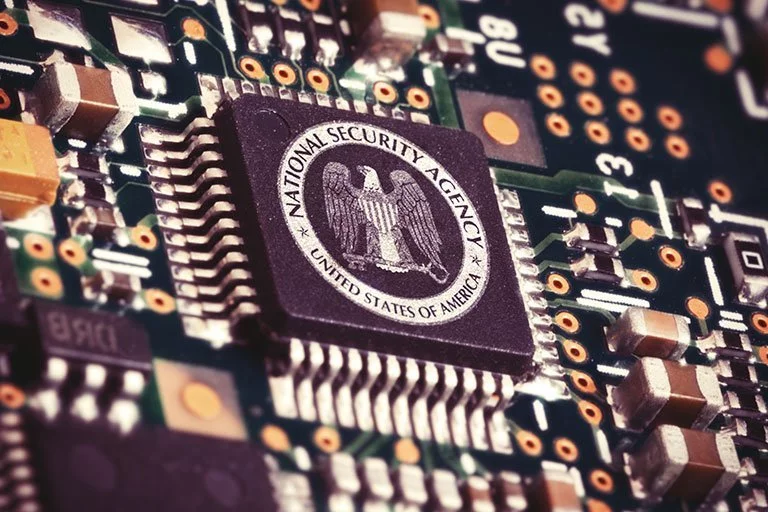Stingray – The Government’s Secret Surveillance Tool Affecting Our Fourth Amendment Rights

Since approximately 1995, federal and state law enforcement agencies across the country have been using a powerful, secret cellphone surveillance tool, known as a Stingray, to both track the physical location of cellphones and capture the contents of its communications. The device mimics the signal of a cellphone tower in order to force cellphones within the area to connect to it. Once a phone connects, law enforcement can then download the information from the phone, such as text message and call information, and track its location. However, during this process countless other cellphones, belonging to unsuspecting citizens, may also connect to and be tracked by the Stingray, if within the vicinity of a target device.
Contents
Secrecy Surrounding Stingray Use
The government has gone to great lengths over the years to keep information about Stingray use from the public, including judges and defense attorneys. Initially, the use of Stingrays was kept secret after the Federal Bureau of Investigations (FBI) required state and local police departments throughout the United States to enter into non-disclosure agreements regarding the Stingrays as a condition to using the devices in their investigations.
Under the terms of the agreements, the FBI allowed police departments to use Stingrays in criminal investigations so long as the departments refrained from providing any information to the public or courts regarding the devices’ operation or existence. Therefore, are very few court opinions addressing the legality of these intrusive devices. Moreover, some law enforcement agencies may not be obtaining any court authorization, permission or warrants before using Stingrays in connection with ongoing criminal investigations.
Fourth Amendment Implications
Stingray surveillance raises serious questions regarding the protections afforded against warrantless and unreasonable searches under the Fourth Amendment to the United States Constitution.
The Fourth Amendment provides that “the right of the people to be secure in their persons, houses, papers, and effects, against unreasonable searches and seizures, shall not be violated, and no warrants shall issue, but upon probable cause, supported by oath or affirmation, and particularly describing the place to be searched, and the persons or things to be seized.” As such, the Fourth Amendment protects people from warrantless searches of places, or seizures of persons or objects, in which they have a reasonable expectation of privacy.
Fourth Amendment Litigation and Court Rulings
The American Civil Liberties Union (ACLU) and other watchdog groups that have uncovered law enforcement’s use of Stingrays have argued that the devices are so intrusive, they violate one’s reasonable expectation of privacy, and therefore constitute a “search” under the Fourth Amendment.
Due to law enforcement’s considerable efforts to conceal the use of Stingrays, there are very few court cases addressing their use, or more importantly, the lawfulness and constitutionality of their use. However, some courts have had the opportunity to examine this issue more closely.
Most recently, in a landmark ruling in 2017, the D.C. Court of Appeals held in Jones v. United States, 168 A.3d 703 (D.C. 2017), that the use of Stingrays to track a suspect’s phone without a warrant violates the Constitution. Specifically, the use of Stingrays to “locate a person through his or her cellphone invades the person’s actual, legitimate and reasonable expectation of privacy in his or her location information and is a search.” Courts in Florida, New York, California, and Maryland have also determined that the use of a Stingray constitutes a search under the Fourth Amendment, and therefore, requires a warrant (and the suppression of evidence gathered from its use if a warrant is not obtained).
However, in the majority of jurisdictions, state and local police departments routinely use Stingrays in criminal investigations without first obtaining a warrant, leaving the area ripe for Fourth Amendment litigation via the filing of motions to suppress evidence.
Challenges and Indicators for Criminal Defendants and Defense Attorneys
The challenge for criminal defendants and criminal defense attorneys lies with first determining, or uncovering, whether or not a Stingray was used in connection with a particular investigation. Due to law enforcement’s long history and efforts to conceal Stingray use, a variety of ways have been devised to creatively avoid attributing the discovery of certain evidence to these clandestine devices.
However, there are some indicators that a knowledgeable criminal defense attorney may look to determine whether a Stingray has been used in your case. In the event that a Stingray was utilized during the course of a criminal investigation, these devices trigger the Fourth Amendment scrutiny described above, in addition to other potential constitutional concerns.
By keeping Stingray technology cloaked in secrecy, federal, state, and local law enforcement agencies have been free to engage in a highly intrusive form of surveillance with very limited oversight by the courts. In those cases where the use of a Stingray is suspected, a skilled criminal defense attorney will be able to ascertain whether this technology was utilized over the course of an investigation in order to then make efforts to suppress any tainted evidence gathered from warrantless Stingray use. As technology continues to advance, technological advancements in law enforcement are also inevitable.
However, until the Supreme Court has the opportunity to address cell-simulator technology such as the Stingray, courts at all levels must reject the government’s efforts to promote secrecy in this area, designed to deny judges and defendants access to information about Stingray capabilities and usage.
